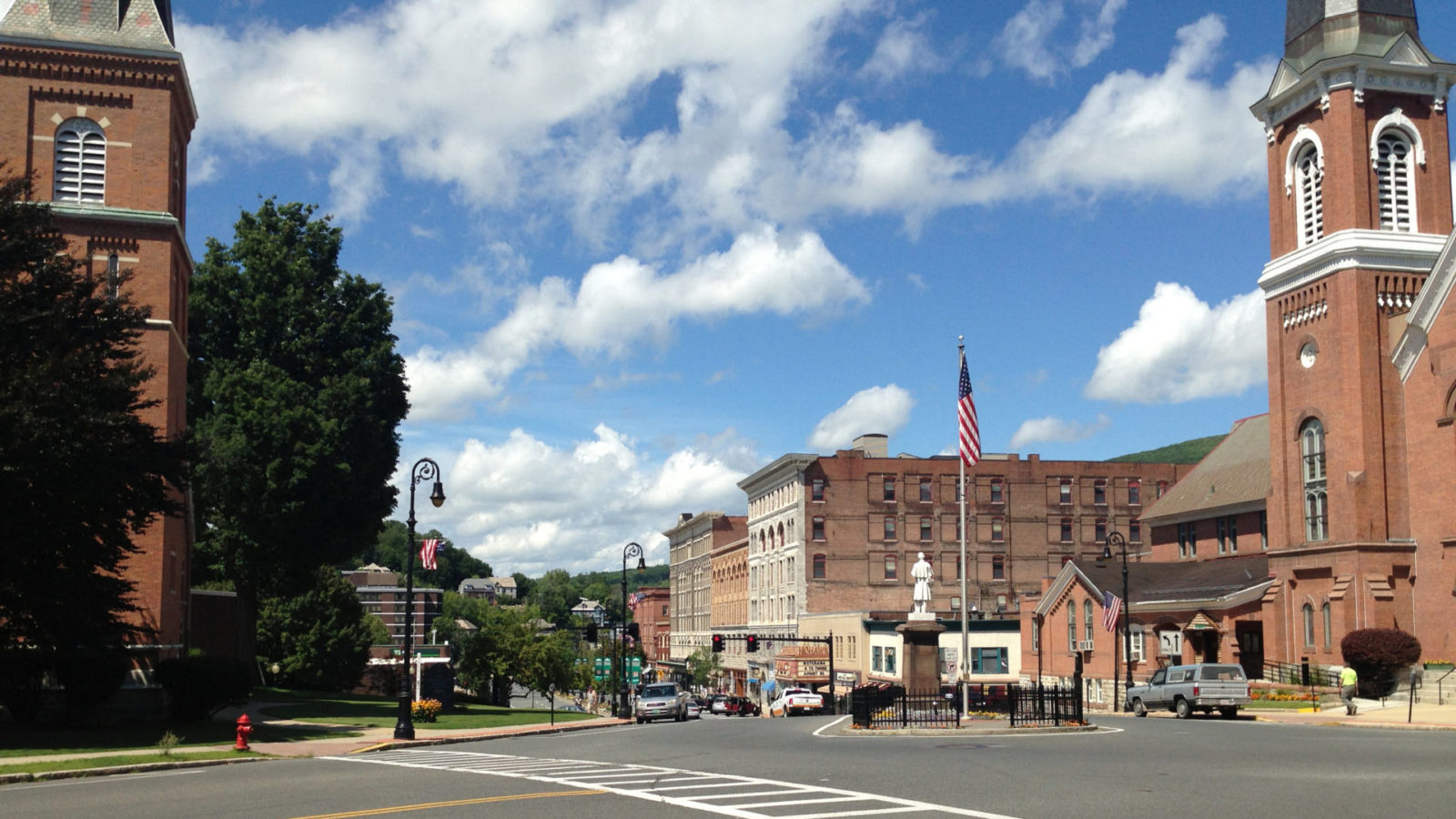
Episode 1:
North Adams in Berkshire County, Massachusetts has that quintessential New England ambiance: red bricked buildings, peaceful rivers and luscious foliage. Even so, its history and identity could be more widely connected to the Rust Belt States of the United States, a northeast and midwest region that was the manufacturing center of the country.
Since deindustrialization began in the 1950s post World War II, North Adams has struggled to reinvent its economy when its largest employer, Sprague Electric Company, closed in 1985. ‘Back in the Berkshires’ will delve into the cultural, historical and monetary boom North Adams experienced in World War II… and the experiences of its community members when that all came crashing down. Click above to listen to the first episode!
Nestled between hills, forests and rivers lies “the smallest city” in Massachusetts: North Adams.
North Adams sits at the western corner of Massachusetts in Berkshire County. It has that quintessential New England town vibe: red-bricked buildings, white steepled churches, and a bountiful natural landscape.
A little more than 13,000 residents call North Adams home. Many of these families have lived in North Adams for generations and can trace their ancestry to French Canadian, Polish, Italian and Irish immigrants that came to the United States in the mid-to-late 1800s.
A smaller but equally important population is the Black community in the Berkshires whose African-American members can trace their histories to the early 1700s, when slavery was still legal in the Massachusetts Constitution. Another equally critical force in both the city and the county are its Indigenous members, specifically activists from the Stockbridge-Munsee community of the Mohican Nation, who are fighting to have their thousand-year-long connection to the land recognized and valued.
All of these people, and many more, have shaped the historical and contemporary landscape of North Adams. Their intertwined and clashing histories have impacted the Berkshires for centuries: the region’s evolving relationship with nature, its religiosity, and its industrial past.
When North Adams (then called East Hoosuck) was founded in the mid-1700s, its economy was dependent on mills even then, many of which were textile mills. Over the years, these mills have taken on different shapes and sizes: from early small cloth and grist mills to larger textile factories during the Industrial Revolution to industrial-sized electronic plants during World War II.
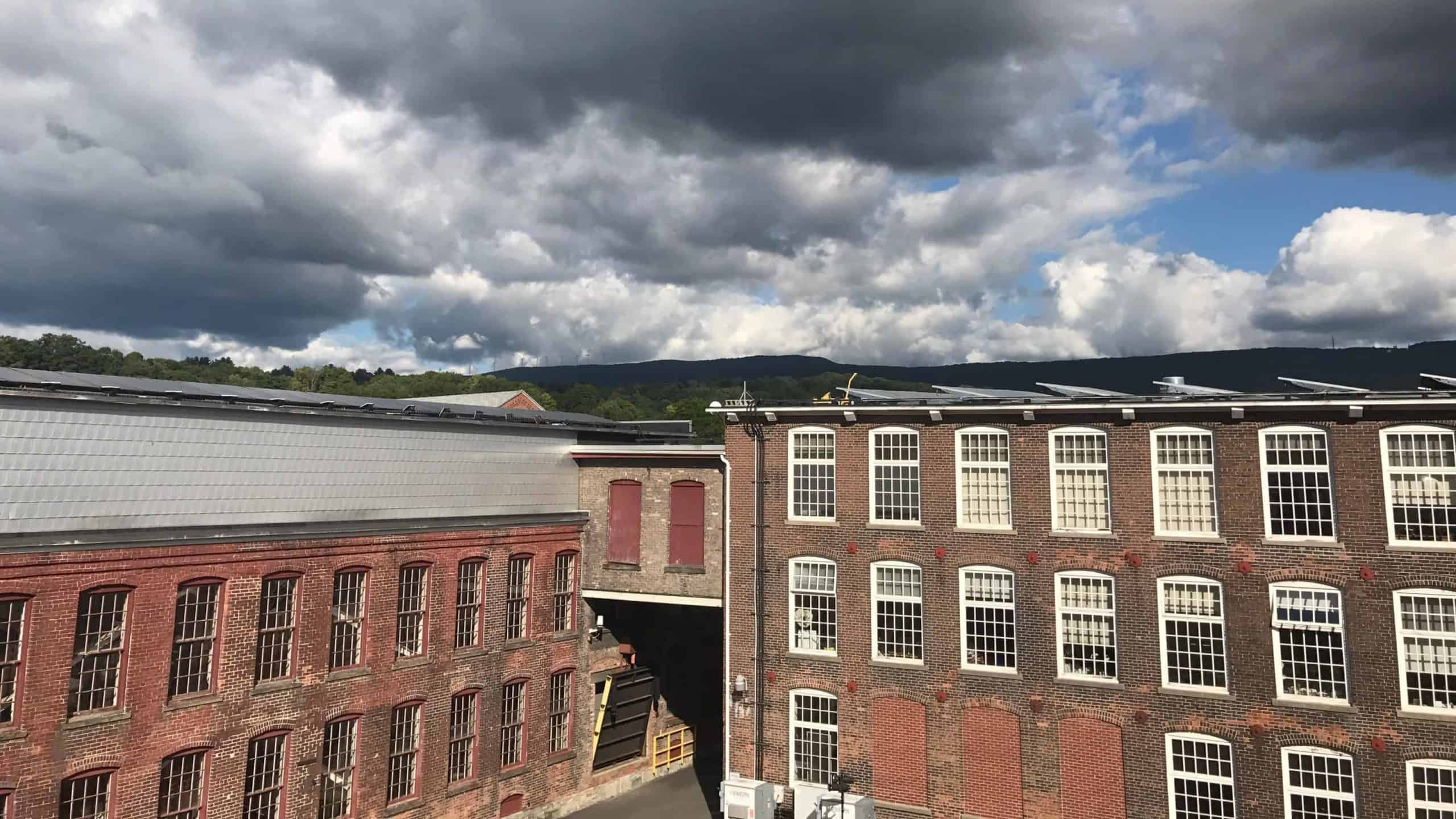

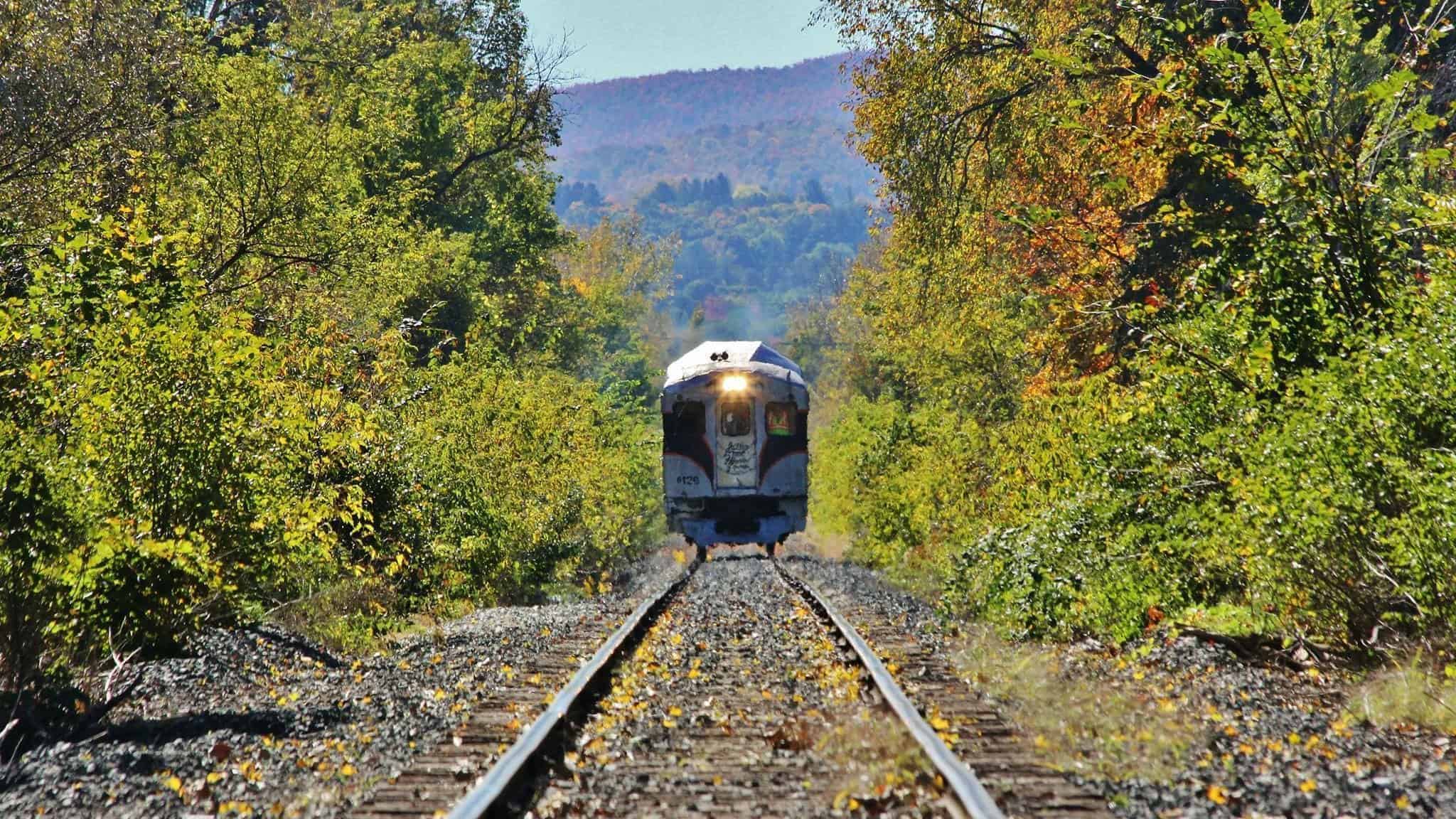
Uplifting Narratives:
This latter period, World War II, will become the backdrop of this podcast series. The primary focus will be on the lives of North Adam’s female residents, specifically those who worked in large factories like Sprague Electric Company. Regardless of gender, residents of North Adams had to navigate socio economic worries, religious and ethnic tensions, and general hardships brought on by both the war and tough work environments.
Considering these difficulties, North Adams has seen its fair share of community discord. And yet, the town has also been able to weather seemingly impossible storms brought on by the Great Depression, World War II and Urban Renewal.
The town has succeeded in doing this by strengthening its social fabric and building relationships between communities. It is this simultaneous social cohesion and social division that make the history of North Adams so incredibly complex.
By talking with local historians, community members and activists, this podcast series hopes to delve into the intersections of these realities: What did factories mean to local residents? How did working-class women traverse ethnic, economic and gender politics? What did people wish for the next generation of residents in North Adams?

By including more narratives, this podcast hopes to provide an expansive and in-depth look into the Berkshires.
North Adams may be small, but it is vibrant. On a hot summer day, one can take refuge from the scorching sun with a refreshing swim at the beautiful Windsor Lake. On cold winter nights, as snow blankets the world in white, you can get hot chocolate from Tunnel City Coffee on Marshall St. And if art is more your scene, you can see James Turrell’s light exhibits at Massachusetts Museum of Contemporary Art– Mass MoCA for short.
The Nature of North Adams
Apart from stores and museums, North Adams is just a short run, bike ride or drive away from nature. Going on these trails, one understands why the environmental writer Henry David Thoreau likened his hike in North Adams to “climbing the gates of heaven.”
Hills, rivers, trees.
Birds, foxes, and deer. All can be found in the forests of the Berkshires.
‘My route lay up a long and spacious valley called the Bellows, because the winds rush up or down it with violence in storms, sloping up to the very clouds between the principal range and a lower mountain… It seemed a road for the pilgrim to enter upon who would climb to the gates of heaven.’ – Henry David Thoreau, describing Bellows Pipe Trail
Hiking the Bellows Pipe Trail takes you up Mount Greylock, the highest point in Massachusetts. For Harry Potter enthusiasts, Mount Greylock would have been the location of North America’s fictional Ilvermorny School of Witchcraft and Wizardry. But for non-JK Rowling enthusiasts, the view from Mount Greylock is simply stunning. Thoreau described the Berkshires from Mount Greylock’s height as a “country [that] we might see in dreams, with all the delights of paradise.”

Rain mists the Hopper, a high valley, from an overlook near the summit of Mount Greylock.
Taking North Hoosac Road from North Adams, one encounters a scenic route with Pine Cobble Summit to the right, and the Hoosic River to the left. Following the winding, peaceful currents of the Hoosic takes you through Blackinton Historic District, a part of Western North Adams that once supplied large orders of wool to the Union Army during the Civil War.
Peeking through foliage you can glimpse the Norad Mill, one of the oldest surviving mills in North Adams and an indicator of the industrialization of the town in the mid-nineteenth century.
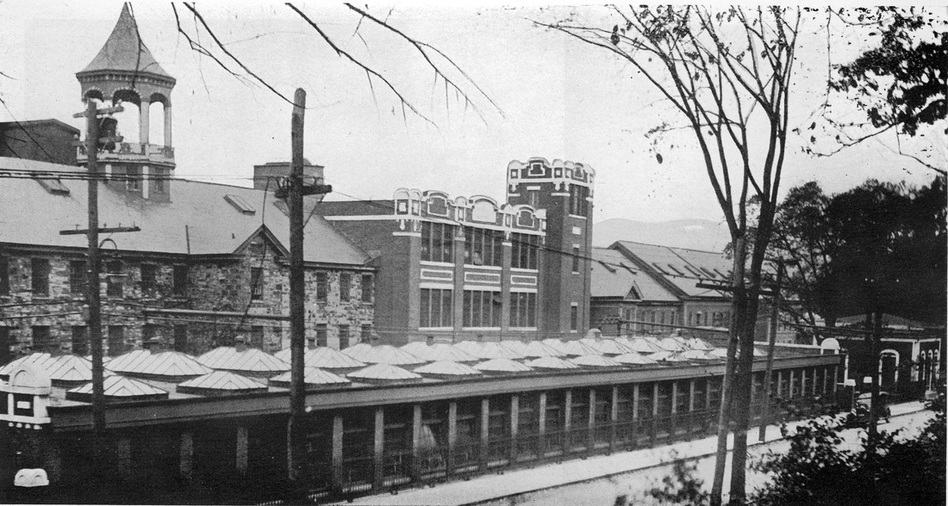
Blackinton Woolen Mill 1920s
For centuries, mills were the economic, social and cultural backbone of North Adams. It was where families and neighbors congregated– a place where cousins, parents and siblings worked side by side for hours on end.
In the mid to late nineteenth-century, the United States opened their gates to industrialization, a process by which a country’s economy transitions from a largely agrarian one to one focused primarily on manufacturing goods. This moment of social change brought many of the immigrant populations that one sees today to the Berkshires.
Immigrant women were central to the survival of families and their communities at large. And they were also at the economic front. These women became the primary labor force for these industrial factories, and thus brought in critical pay to their households. This podcast hopes to look into their stories and the stories of the generations that followed.
What did factories mean to local residents? How did working-class women traverse ethnic, economic and gender politics? What did people wish for the next generation of residents in North Adams?
Sprague’s Role in the War:
In 1929, just months before the world shuttered to a grinding halt during the Great Depression, Sprague Electric Company, an electric components factory, made its move to North Adams from Quincy, Massachusetts.
Although the company would deal with its ups and downs, Sprague would eventually become the town’s largest employer… and was so for decades. It also became a key supplier of mechanical parts for the United States when the world was thrust into World War ll in 1939. World War II, of course happened, only a short twenty one years after “The War To End All Wars” or World War I ended.
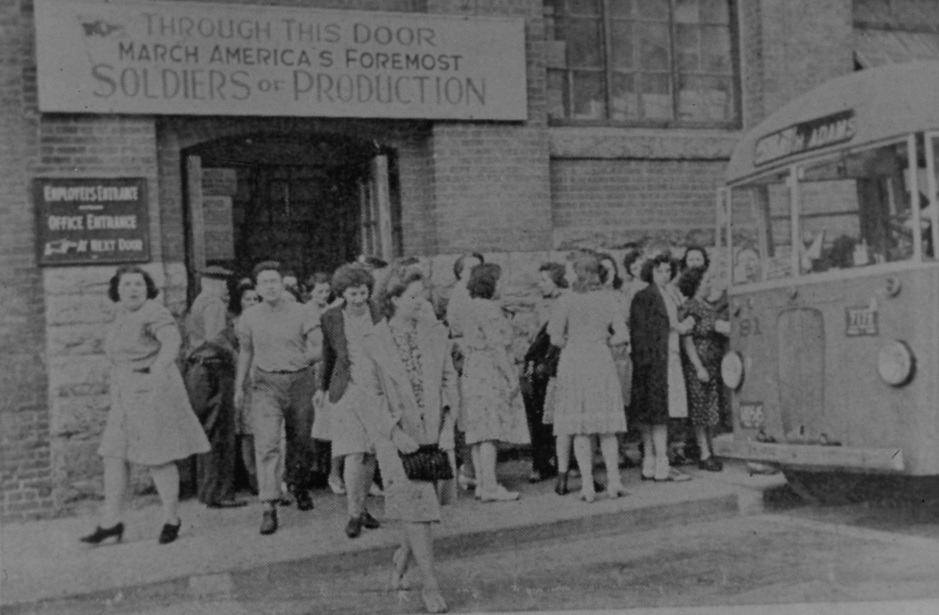
When the United States officially entered the war in 1941, Sprague Electric Company and its largely female workforce, found themselves at the helm of this war effort. Balancing both work and home life, mothers relied on family members and their partners to help take care of children when they worked long shifts.
Women became self-taught mechanics, welding metals in furnace-like conditions. Many of these women helped make the electrical capacitors that were used in proximity fusers and missiles. They campaigned in unions to fight for higher pay. Some Sprague employees were even a part of the Manhattan Project, the secret and controversial research project that produced the first atomic bombs.
During World War ll, the communal social fabric in North Adams became even more critical as men left to go fight and more women joined the workforce. Factories like Sprague Electric, and its predecessor Arnold Print Works, had always employed primarily women, but demands brought on by the war further intensified this trend and at their height, these two factories employed thousands of female workers.
Withstanding hot steam and dangerous machinery, working at Sprague was no easy feat. One can not overstress that Sprague could be an exhaustive place. But it also resembled (in a sense) a community. Some employees worked on the company newsletter, called the Sprague Log where they shared family and baby photos to boost company morale. Others competed in the company baseball league. All worked together for hours on end, day after day, year after year.
In a working-class town such as North Adams, everyone pitched in to support one another. With such large textile industries like Sprague Electric employing so many residents, North Adams truly was a “factory town,” a place where the boundaries between family and company became muddled.
In 1985, Sprague closed its operations in North Adams.
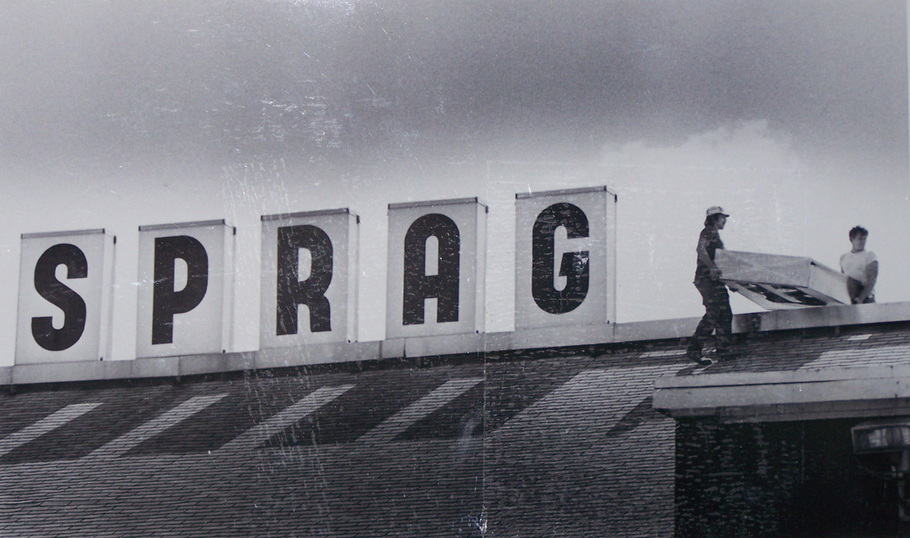
Sprague announced it would be leaving North Adams in 1985.
The closing of Sprague shook North Adams to its core. To this day, many people continue to grapple with its loss and the emotions that it elicited: anger, sadness, nostalgia. But one can still take in the red-bricked walls of Sprague Electric’s Marshall street plant… even if it looks a bit different now.
Now instead of workers seeing billowing smoke and hearing the sounds of a factory, North Adams’ residents and its visitors will follow arrows pointing them to the entrance of Massachusetts Museum of Contemporary Art or Mass MoCA for short.
Mass MoCA is one of the largest contemporary art museums in the United States. But like Sprague, Mass MoCA has had a complicated and sometimes tumultuous relationship with the residents in North Adams, many of whom see the presence of the contemporary museum as a way to neglect the instability and hole caused by the closure of Sprague.
“The loss of Sprague… is the hole in North Adams’ soul. I don’t think it can be filled as long as anybody that remembers Sprague is alive.”
– Steve Melito, North Adams native and resident, taken from 2016 North Adams Oral History Project
Possibly one of the only stable facets in North Adam’s ever changing life has been the Hoosic River. One can see the Hoosic River from the windows of Mass MoCA. But long before Sprague or Mass MoCA settled into North Adams and even before North Adams came to be, the Hoosic River flowed through the geography of this region.
Its winding currents flow 76.3 miles across three different states. Along this journey, it provides a home and resource to all sorts of natural wildlife. For centuries, it was also a place of gathering for Mohican people. But even the Hoosic has gone through its own metamorphosis through the years. What one sees today is not the same river that it was just a couple of decades ago, nonetheless centuries ago when factories had yet to dominate the area and pollute its waters.
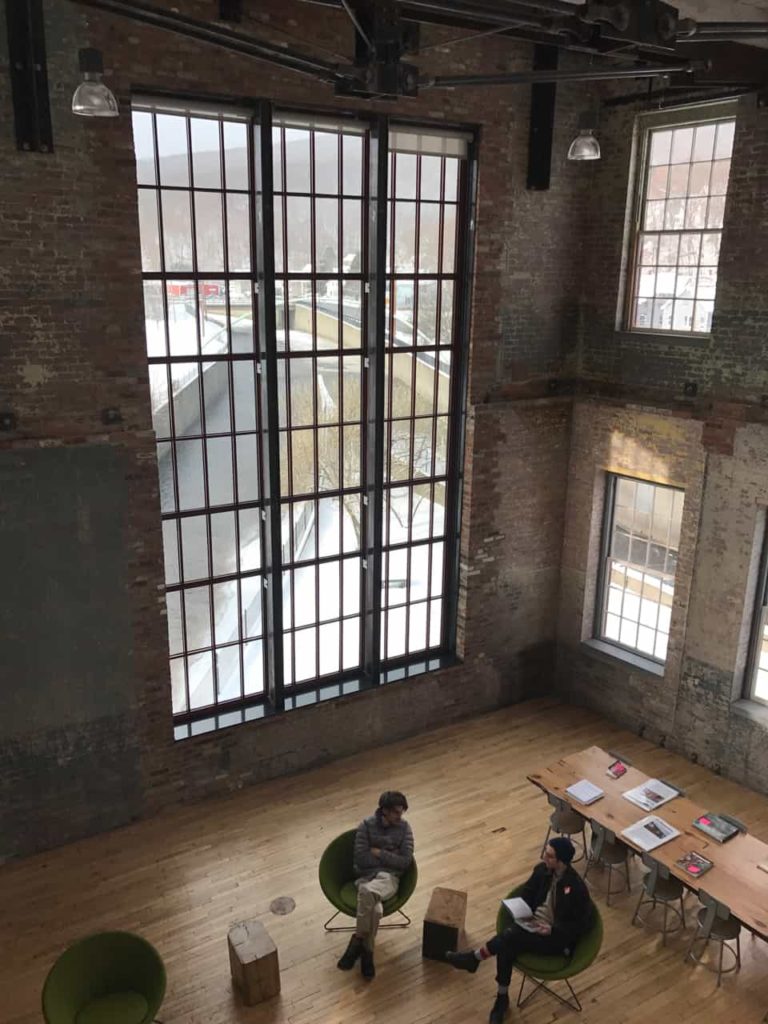
The pros of Building 6 looks out over the Hoosick River.
The upcoming segment of the podcast will take a deep dive into the Hoosic River, and its neighbor, the Housatonic. It will investigate their historical and natural significance, their roles in the production of textiles, and their unfortunate environmental decline.
The episode will hope to track and explore the evolutionary nature of these two great rivers. Following its winding currents, listeners will visit, as Berkshires native and American activist W.E.B. Du Bois wrote, “the natural great highway of the valley.”

The Hoosic River runs through golden maple trees in Williamstown on a fall afternoon.

